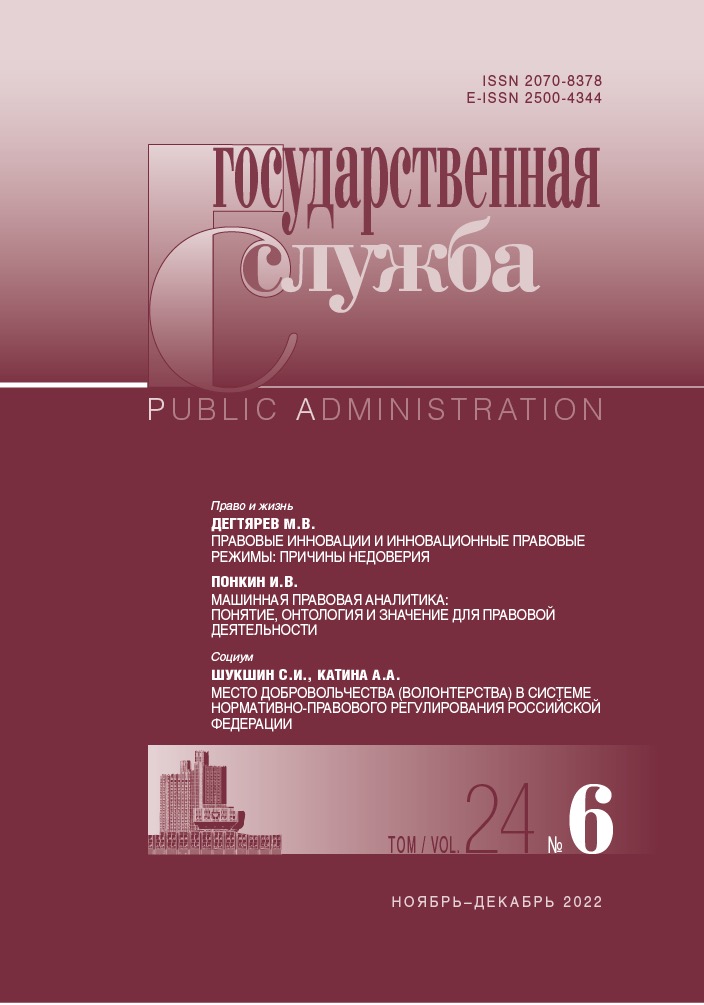Recommended link to article:
PRABHAT KUMAR DATTAа
аUniversity of Calcutta
ALEXANDER P. KOTCHEGURAb
bRussian Presidential Academy of National Economy and Public Administration
DOI: 10.22394/2070-8378-2022-24-5-6-11
Abstract:
The paper explores the peculiarities of the current system of public administration in India, the role and functions of civil servants and their interface and relations with politicians. It delienates existing main problem areas and outlines certain “remedy” actions to overcome current difficulties and raise performance of the national bureaucracy, in particular – its ability to deliver timely and better quality public services. The findings and inferences of the accomplished research are largely based on the analysis of the performance of Indian civil servants in the current administrative and political setting, specifically at the regional and local levels. The colonial legacy of civil service still persists in this fast-changing era of globalization. It is in this context that civil service reform constitutes a quintessential element of the system of good governance. The study focuses on the internationally recognized experience of the regional administration in Kerala State, focused on the successful mobilization of citizens, businesses and street level bureaucrats to withstand the impact of the pandemic. The relative success of Kerala in addressing key issues of survival for tens of thousands of citizens is largely explained by the ability of the regional and local governments to encourage and coordinate stakeholders in their joint anti-coronavirus efforts and support innovative grassroots intiatives.
Keywords:
India, COVID-19, public administration, bureaucracy, civil society
Received:
October 8, 2022
References:
Biju T. The role of Kudumbashrees in Covid-19 containment. Purakala. 2020. Vol. 31 (28). In English
Chathukulam J., Tharamangalam J. The Kerala model in time of COVID19: rethinking the State, Society and Democracy. World Development. 2021. Vol. 137. In English
Choolayil A., Putran L. Covid-19, the local and the global: Lessons from Kerala. South Asia Research. 2021. No. 40 (4). In English
Datta P.K., Majumdar S. The role of regulatory agencies in India’s governance. Indian Journal of Public Administration. SAGE. 2018. No. 64 (3). P. 427–441. In English
Hood C., Dixon R. What we have to show for 30 years of new public management: Higher costs, more complaints. Governance. 2015. No. 28 (3). P. 265–267. In English
Iyer L., Mani A. Traveling agents: political change and bureaucratic turnover in India. Working paper. Harvard Business School. 2009. P. 57. In English
Kim P., Kotchegura A. Talent management in government in times of economic instability: selected cases from the BRICS countries. Public Money & Management. 2017. No. 37. P. 7–14. In English
Krishnan K., Somanathan T.V. The Civil Service. In: Rethinking public institutions in India. Ed. by Devesh, Mehta, Pratap Bhanu, Milan Vaishnav. Oxford University Press. 2017. P. 339–416. In English
Kutty V. Historical analysis of the development of health care facilities in Kerala state. Health Policy and Planning. 2000. No. 15(1). P. 103– 109. In English
Mathur K. From government to governance. National Book Trust. 2016. P. 1–4. In English
Mishra R. National civil service system in India: a critical view // Civil Service Systems in Asia. Ed. by Burns J., Bowornwathana B., Elgar E. 2001. P. 352. In English
Nileema M. How the Kerala government is shaping and implementing its COVID-19 response. The Caravan. 2020. March 28. https://caravanmagazine.in/health/covid-19-coronavirus-kerala-vijayan-shailaja-healthcare-system. In English
Radha D., Kumaran J., Nair M. The role of local self-governments in control of COVID-19 in Kerala: an exploratory study. International Journal of Community Medical Public Health. 2020. No. 7 (12). P. 5027–5034. In English
Rasul I., Rogger D., Williams M. Management and bureaucratic effectiveness: A scientific replication. International Growth Centre. 2017. Reference number: S-33301-GHA-1. In English
Shringere A., Seema F. COVID-19 pandemic points to the need for a decentralized response. State and Local Government. 2020. Vol. 52 (3). In English
Singh A. Hunger, COVID-19 and the Indian administrative state. Centre for Policy Research Working Paper. 2020. In English
Sneha P., Neha S., Ashwin V., Avanti D., Ayush P. Bureaucratic indecision and risk aversion in India. Indian Public Policy Review. 2021. No. 2 (6). P. 55–87. In English
Vaishnav M., Khosla S. The Indian administrative service meets Big Data. Carnegie India. https://carnegieendowment.org/2016/09/01/ indian-administrative-service-meets-big-data-pub-64457. 2016. In English
Véron R. The “new” Kerala model: Lessons for sustainable development. World Development. 2001. No. 29 (4). P. 601–617. In English
Articles in Open Access mode are published under the Creative Commons Attribution 4.0 International (CC BY) license.

